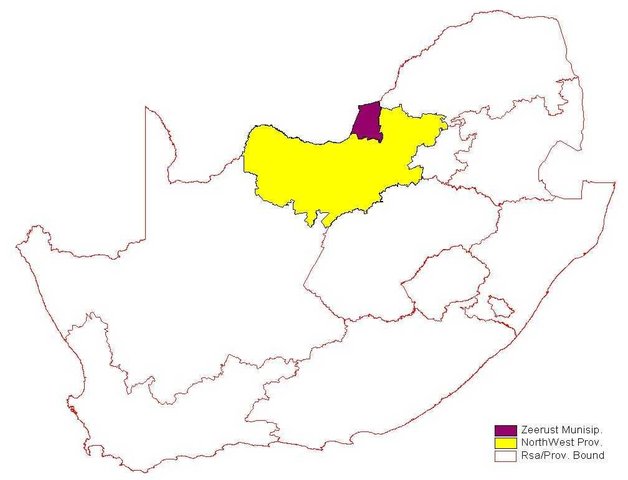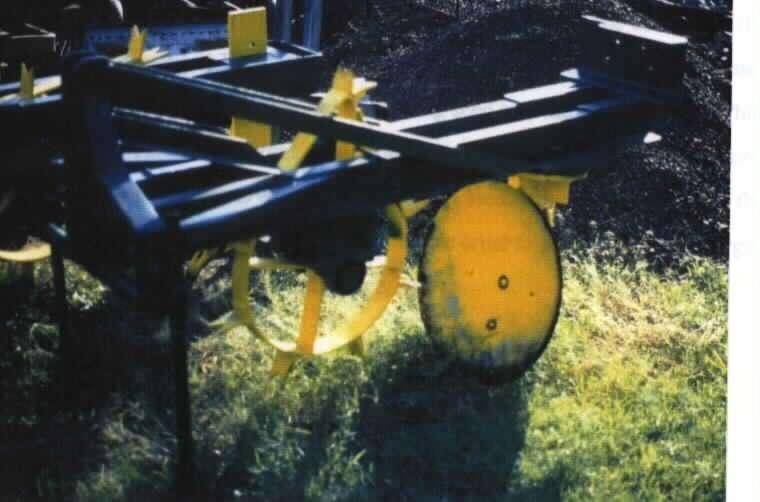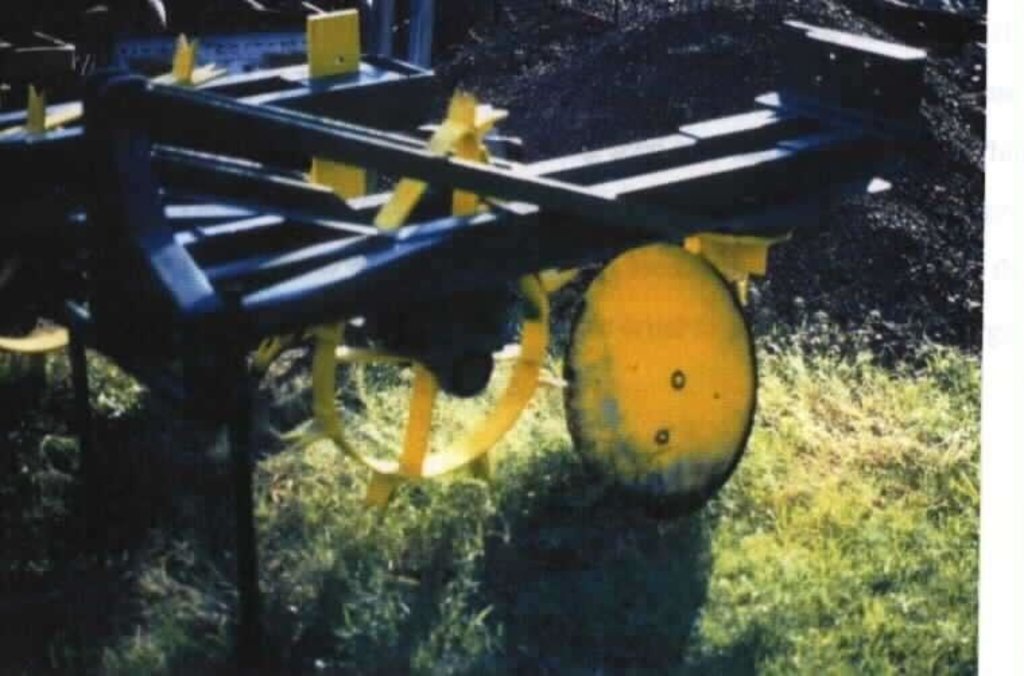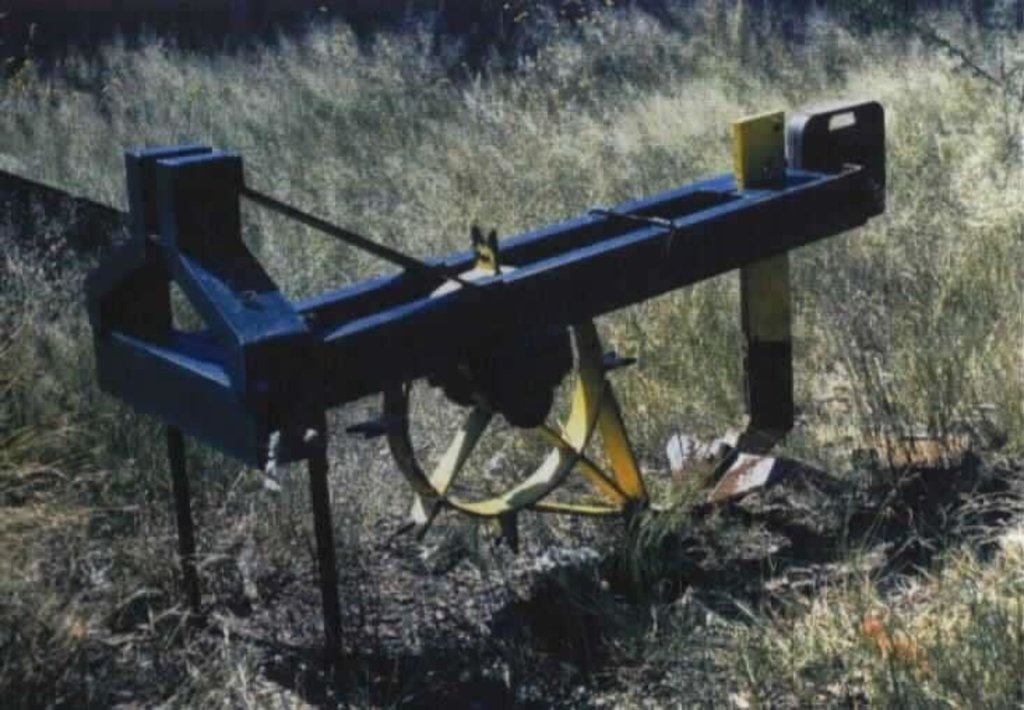Agronomic & vegetative rehabilitation [South Africa]
- Creation:
- Update:
- Compiler: Klaus Kellner
- Editor: –
- Reviewers: David Streiff, Alexandra Gavilano
Restoration, rehabilitation, reclamation
technologies_975 - South Africa
View sections
Expand all Collapse all1. General information
1.2 Contact details of resource persons and institutions involved in the assessment and documentation of the Technology
1.3 Conditions regarding the use of data documented through WOCAT
The compiler and key resource person(s) accept the conditions regarding the use of data documented through WOCAT:
Yes
1.5 Reference to Questionnaire(s) on SLM Approaches (documented using WOCAT)

Land user participation with research [South Africa]
Land user participation with researchers to improve existing and develop new technologies
- Compiler: Klaus Kellner
2. Description of the SLM Technology
2.1 Short description of the Technology
Definition of the Technology:
Combinations; cultivation & vegetative
2.2 Detailed description of the Technology
Description:
The purpose of the rehabilitation includes an increase in production potential, vegetative cover and density, biodiversity, fodder for grazing and palatable grass species.
To establish this technology, cultivation of the denuded areas was done by dyker plough. Oversowing with a grass-seed mixture followed. The seeds (indigenous) were purchased from a seed-company. If woody encroachment species are available, place the branches on the cultivated area. No maintenance is necessary; the area is left as it is for 3 years with no grazing if possible (no grazing for cattle, but for game some grazing-areas are partly covered by branches no grazing).
2.3 Photos of the Technology
2.5 Country/ region/ locations where the Technology has been applied and which are covered by this assessment
Country:
South Africa
Region/ State/ Province:
North West Province
Further specification of location:
Zeerust (Eastern parts)
Specify the spread of the Technology:
- evenly spread over an area
If the Technology is evenly spread over an area, specify area covered (in km2):
20.0
Comments:
Total area covered by the SLM Technology is 20 km2.
Commercial owned farmland - game and cattle farming
Map
×2.6 Date of implementation
If precise year is not known, indicate approximate date:
- less than 10 years ago (recently)
2.7 Introduction of the Technology
Specify how the Technology was introduced:
- through projects/ external interventions
Comments (type of project, etc.):
Land owners & agriculturist - extension
3. Classification of the SLM Technology
3.1 Main purpose(s) of the Technology
- improve production
- reduce, prevent, restore land degradation
3.2 Current land use type(s) where the Technology is applied
Land use mixed within the same land unit:
Yes
Specify mixed land use (crops/ grazing/ trees):
- Silvo-pastoralism

Grazing land
Extensive grazing:
- Semi-nomadic pastoralism
- Ranching

Forest/ woodlands
Products and services:
- Timber
- Fuelwood
- Fruits and nuts
- Grazing/ browsing
- Nature conservation/ protection
- Recreation/ tourism
Comments:
Major land use problems (compiler’s opinion): Bush encroachment, bare denuded land - open spaces
Major land use problems (land users’ perception): Not productive for grazing land
Erosion
Low grass cover
Semi-nomadism / pastoralism: Yes
Ranching: Yes
Other grazingland: intensive grazing land
Forest products and services: timber, fuelwood, fruits and nuts, grazing / browsing, nature conservation / protection, recreation / tourism
Constraints of wastelands / deserts / glaciers / swamps
Constraints of recreation
Number of growing seasons per year: 1
Longest growing period in days: 180; Longest growing period from month to month: Oct - Mar
3.4 Water supply
Water supply for the land on which the Technology is applied:
- rainfed
3.5 SLM group to which the Technology belongs
- improved ground/ vegetation cover
- minimal soil disturbance
3.6 SLM measures comprising the Technology

agronomic measures

vegetative measures
- V2: Grasses and perennial herbaceous plants

structural measures

management measures
Comments:
Main measures: agronomic measures, management measures
Secondary measures: vegetative measures, structural measures
Type of agronomic measures: contour tillage
3.7 Main types of land degradation addressed by the Technology

soil erosion by water
- Wt: loss of topsoil/ surface erosion
- Wg: gully erosion/ gullying

chemical soil deterioration
- Cn: fertility decline and reduced organic matter content (not caused by erosion)

water degradation
- Ha: aridification
Comments:
Secondary types of degradation addressed: Wg: gully erosion / gullying
Main causes of degradation: over-exploitation of vegetation for domestic use, overgrazing, poverty / wealth (Lack of captial - Not enough money to implement rehabilitation - higher inflation)
Secondary causes of degradation: other natural causes (avalanches, volcanic eruptions, mud flows, highly susceptible natural resources, extreme topography, etc.) specify (Climate), land tenure (Land subdivision - Land properties get smaller & less cost effective), education, access to knowledge and support services (Lack of knowledge)
3.8 Prevention, reduction, or restoration of land degradation
Specify the goal of the Technology with regard to land degradation:
- prevent land degradation
- reduce land degradation
Comments:
Also rehabilitation / reclamation of denuded land
4. Technical specifications, implementation activities, inputs, and costs
4.1 Technical drawing of the Technology
Technical specifications (related to technical drawing):
Technical knowledge required for field staff / advisors: moderate
Technical knowledge required for land users: moderate
Main technical functions: control of dispersed runoff: retain / trap, control of concentrated runoff: retain / trap, improvement of ground cover, increase of surface roughness, increase in organic matter, increase of infiltration, improvement of soil structure
Secondary technical functions: control of raindrop splash, reduction of slope angle, reduction of slope length, increase / maintain water stored in soil, increase of groundwater level / recharge of groundwater, water harvesting / increase water supply, water spreading, sediment retention / trapping, sediment harvesting, increase in soil fertility
Agronomic measure: overseeding
Material/ species: Indigenous species
Quantity/ density: 5kg/ha
Remarks: In hollows made by cultivation
Agronomic measure: branches
Material/ species: From encroachment species (woody)
Vegetative measure: sowing by hand
Vegetative material: O : other
Number of plants per (ha): 5kg/ha
Vertical interval within rows / strips / blocks (m): 1.5m
Vegetative measure: Vegetative material: O : other
Vegetative measure: Vegetative material: O : other
Vegetative measure: Vegetative material: O : other
Grass species: seed
Change of land use practices / intensity level
Major change in timing of activities: Different grazing patterns for animals to avoid treated area
Control / change of species composition: Use different animals e.g. game
4.2 General information regarding the calculation of inputs and costs
other/ national currency (specify):
Rand
If relevant, indicate exchange rate from USD to local currency (e.g. 1 USD = 79.9 Brazilian Real): 1 USD =:
6.0
Indicate average wage cost of hired labour per day:
8.00
4.3 Establishment activities
| Activity | Timing (season) | |
|---|---|---|
| 1. | Dyker plough making hollows | Beginning of rainy season |
| 2. | Sowing of perennial grass seeds (in hollows, waiting for rain) | Beginning of rainy season |
| 3. | Fences | At beginning of project |
4.4 Costs and inputs needed for establishment
| Specify input | Unit | Quantity | Costs per Unit | Total costs per input | % of costs borne by land users | |
|---|---|---|---|---|---|---|
| Labour | Ploughing and sowing | persons/day | 60.0 | 8.0 | 480.0 | |
| Equipment | Machine use | ha | 100.0 | 14.0 | 1400.0 | |
| Plant material | Seeds | ha | 100.0 | 40.0 | 4000.0 | |
| Total costs for establishment of the Technology | 5880.0 | |||||
| Total costs for establishment of the Technology in USD | 980.0 | |||||
Comments:
Duration of establishment phase: 12 month(s)
4.5 Maintenance/ recurrent activities
| Activity | Timing/ frequency | |
|---|---|---|
| 1. | Dyker plough cultivation on contours | Start of growing season / |
| 2. | Chopping of woody branches of encroaching species | Start of growing season / |
| 3. | Bush packing on cultivated area | Beginning of season /1st season |
4.6 Costs and inputs needed for maintenance/ recurrent activities (per year)
Comments:
Machinery/ tools: Tractor & dyker plough implement
This costs are calculated for 100 ha
No additional fencing material costs.
Old fences used to enclose the treated area.
(+ R 4000 /km fencing costs if new (normal) fence is needed. For game fence R4000 for 300m)
4.7 Most important factors affecting the costs
Describe the most determinate factors affecting the costs:
No subsidies
Very labour intensive
5. Natural and human environment
5.1 Climate
Annual rainfall
- < 250 mm
- 251-500 mm
- 501-750 mm
- 751-1,000 mm
- 1,001-1,500 mm
- 1,501-2,000 mm
- 2,001-3,000 mm
- 3,001-4,000 mm
- > 4,000 mm
Agro-climatic zone
- semi-arid
5.2 Topography
Slopes on average:
- flat (0-2%)
- gentle (3-5%)
- moderate (6-10%)
- rolling (11-15%)
- hilly (16-30%)
- steep (31-60%)
- very steep (>60%)
Landforms:
- plateau/plains
- ridges
- mountain slopes
- hill slopes
- footslopes
- valley floors
Altitudinal zone:
- 0-100 m a.s.l.
- 101-500 m a.s.l.
- 501-1,000 m a.s.l.
- 1,001-1,500 m a.s.l.
- 1,501-2,000 m a.s.l.
- 2,001-2,500 m a.s.l.
- 2,501-3,000 m a.s.l.
- 3,001-4,000 m a.s.l.
- > 4,000 m a.s.l.
5.3 Soils
Soil depth on average:
- very shallow (0-20 cm)
- shallow (21-50 cm)
- moderately deep (51-80 cm)
- deep (81-120 cm)
- very deep (> 120 cm)
Soil texture (topsoil):
- medium (loamy, silty)
- fine/ heavy (clay)
Topsoil organic matter:
- low (<1%)
If available, attach full soil description or specify the available information, e.g. soil type, soil PH/ acidity, Cation Exchange Capacity, nitrogen, salinity etc.
Soil fertility is very low - low
Soil drainage / infiltration is poor
Soil water storage capacity is very low - low
5.6 Characteristics of land users applying the Technology
Market orientation of production system:
- subsistence (self-supply)
- commercial/ market
Off-farm income:
- less than 10% of all income
Relative level of wealth:
- average
Indicate other relevant characteristics of the land users:
Population density: < 10 persons/km2
Annual population growth: < 0.5%
2% of the land users are rich.
50% of the land users are average wealthy.
17% of the land users are poor.
30% of the land users are poor.
Off-farm income specification: Commercial
10-50% Communal, poor. Commercial - < 10%
5.7 Average area of land used by land users applying the Technology
- < 0.5 ha
- 0.5-1 ha
- 1-2 ha
- 2-5 ha
- 5-15 ha
- 15-50 ha
- 50-100 ha
- 100-500 ha
- 500-1,000 ha
- 1,000-10,000 ha
- > 10,000 ha
5.8 Land ownership, land use rights, and water use rights
Land ownership:
- individual, titled
- commercial
- commercial
6. Impacts and concluding statements
6.1 On-site impacts the Technology has shown
Socio-economic impacts
Production
fodder production
fodder quality
animal production
production area
Comments/ specify:
Keep 3 years from grazing
land management
Income and costs
farm income
economic disparities
workload
Other socio-economic impacts
input constraints
initial costs
Comments/ specify:
Labour intensive, must have a tractor & implement or hire
Socio-cultural impacts
community institutions
SLM/ land degradation knowledge
Comments/ specify:
From extension worker
conflict mitigation
Ecological impacts
Water cycle/ runoff
surface runoff
Quantity before SLM:
70
Quantity after SLM:
20
excess water drainage
Soil
soil moisture
soil cover
soil loss
Other ecological impacts
soil erosion locally
6.2 Off-site impacts the Technology has shown
reliable and stable stream flows in dry season
downstream flooding
Comments/ specify:
Better vegetative cover, better water infiltration, less siltation of dams used for watering live stock
downstream siltation
wind transported sediments
Comments/ specify:
August - wind high, higher vegetation cover & density
6.4 Cost-benefit analysis
How do the benefits compare with the establishment costs (from land users’ perspective)?
Short-term returns:
negative
Long-term returns:
positive
How do the benefits compare with the maintenance/ recurrent costs (from land users' perspective)?
Short-term returns:
negative
Long-term returns:
very positive
6.5 Adoption of the Technology
- 11-50%
If available, quantify (no. of households and/ or area covered):
50 percent of the area
Of all those who have adopted the Technology, how many did so spontaneously, i.e. without receiving any material incentives/ payments?
- 11-50%
Comments:
30% of land user families have adopted the Technology with external material support
Comments on acceptance with external material support: estimates
20% of land user families have adopted the Technology without any external material support
Comments on spontaneous adoption: estimates
There is a little trend towards spontaneous adoption of the Technology
Comments on adoption trend: Farmers (land users) are more aware about land degradation and want to do something about it.
More in media
6.7 Strengths/ advantages/ opportunities of the Technology
| Strengths/ advantages/ opportunities in the land user’s view |
|---|
|
Increase grazing capacity, more fodder How can they be sustained / enhanced? Good & controlled management |
|
Better & more income: meat, funds How can they be sustained / enhanced? Good & controlled management |
| Strengths/ advantages/ opportunities in the compiler’s or other key resource person’s view |
|---|
|
Decrease bush encroachment and invasion of woody species How can they be sustained / enhanced? New growth of species must be controlled |
|
Increase vegetation cover & density How can they be sustained / enhanced? Keep out grazing |
|
Increase soil moisture & infiltration rate How can they be sustained / enhanced? Deep cultivation, cover by twigs/branches |
|
Increase seed bank for whole area How can they be sustained / enhanced? Let the grasses sown - reproductive & make seed so that seed can be distributed by wind or animals |
6.8 Weaknesses/ disadvantages/ risks of the Technology and ways of overcoming them
| Weaknesses/ disadvantages/ risks in the compiler’s or other key resource person’s view | How can they be overcome? |
|---|---|
| Low cost/benefit rates in short term | Keep it up and don't get discouraged -see advantages over the long term |
| Need tractor & implements | Hire implements from Agriculture of other land users |
| Must have knowledge about the SWC technology | Ask technical & support by Agricultural extension or researches or other land users |
7. References and links
7.1 Methods/ sources of information
7.2 References to available publications
Title, author, year, ISBN:
Van der Merwe, JPA. MSc thesis. 1995.Soil conservation booklet
Available from where? Costs?
Potchefstroom University
Title, author, year, ISBN:
Soil conservation booklet
Links and modules
Expand all Collapse allLinks

Land user participation with research [South Africa]
Land user participation with researchers to improve existing and develop new technologies
- Compiler: Klaus Kellner
Modules
No modules





